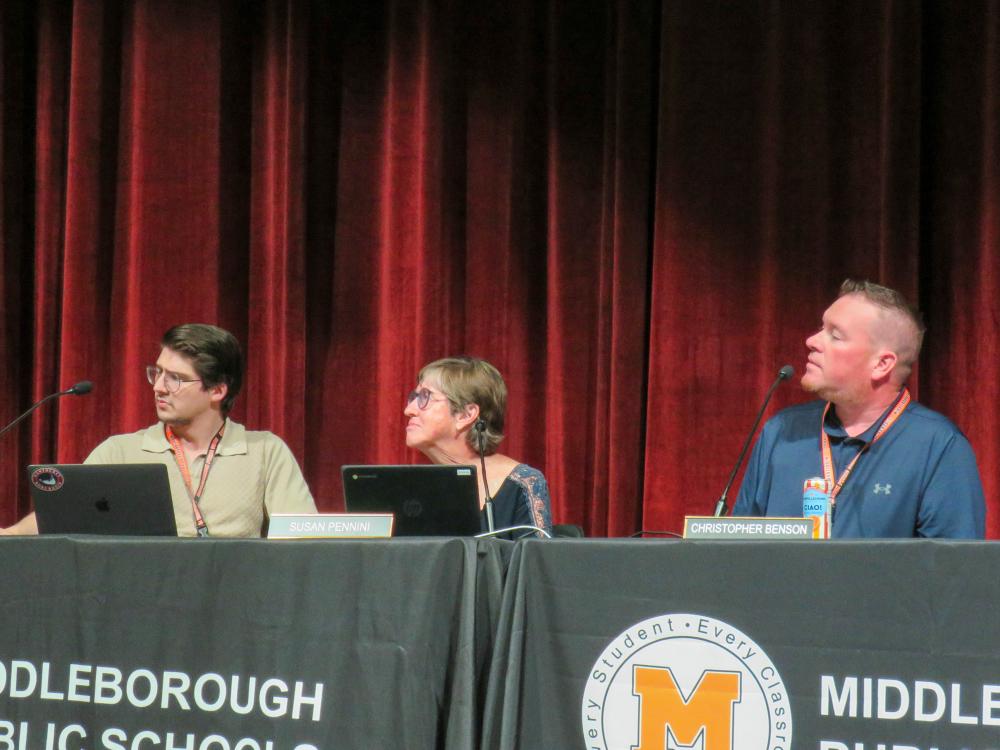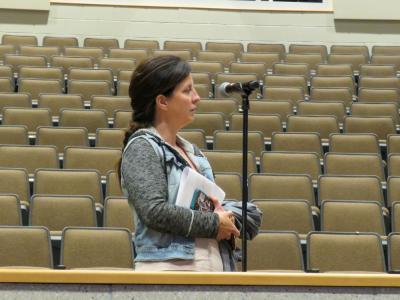Middleboro School Committee reviews proposed student handbook changes
MIDDLEBORO — The Middleboro School Committee reviewed — but postponed voting on — proposed changes to the student handbook that would update bathroom procedures and reference state laws protecting transgender and non-binary students.
Administrators from Middleboro’s elementary, middle and high schools annually propose revisions to their respective handbooks. This year’s proposed changes include the adjustments to bathroom procedures, as well as minor updates to cell phone policies, bus expectations and other rules.
The current Middleboro High School Student Handbook includes the following statement: “Transgender and non-binary students may exercise their legally protected right to use the restroom aligned with the gender that the student consistently asserts at school. If this creates discomfort for any student, the student is encouraged to contact the school counseling office to discuss specific needs or concerns.”
If approved by the School Committee, that same language would be added to the handbooks for the district’s elementary and middle schools.
Additionally, the following sentence would be included in all handbooks: “Bathroom access and use is modified for students based on their individual needs. Students that have medical or special needs will be accommodated.”
The proposed updates would also add references in the handbook appendix to two Massachusetts General Laws. One outlines civil penalties for discrimination based on race, color, religious creed, national origin, sex, gender identity or sexual orientation. The other affirms the right of transgender individuals to use restrooms or locker rooms consistent with their gender identity. It also includes language allowing legal action against anyone who asserts a gender identity for an improper purpose.
Superintendent Carolyn Lyons emphasized that the bathroom procedures are not new. Rather, she said, the changes reflect a documentation of existing practice and a reference to the state laws that support those practices.
“We thought it was very important that this verbiage be in the handbooks,” Lyons said.
The School Committee did not vote on the proposals during its June 26 meeting. Committee member Allin Frawley recommended that the district’s legal team review the changes, prompting the committee to postpone a vote until its next meeting in late July.
The proposed changes to the handbook’s bathroom procedures sparked questions from Bridget Kearns, one of only two parents present at the meeting.
Kearns’ concerns centered on the elementary and middle schools and the proposed language regarding the right of students “to use the restroom aligned with the gender that the student consistently asserts at school.”
“Do they have equal access to all bathrooms? Boys can go in girls’ rooms, girls can go in boys’ rooms, everybody has equal access to everything? They just can pick and choose where they go?” Kearns asked, expressing concern that the policy — and students’ identities — were ambiguous.
Kevin Avitabile, director of student services, explained that any student who has expressed identity needs has a support plan and is regularly working with counselors — and that students cannot choose a bathroom on a whim.
“If they came in the next day, or two days later and said I want to switch, we’re working to support them through that, but we’re not allowing them to have ambiguous switches that happen whenever they want,” Avitabile said.
He said counselors regularly meet with students and their families and are “quite honest with them about the ramifications of switching very quickly like that.”
“We work with them clinically to try and process these emotions, to try to support them the best we can, to put a system in place that is safe for the school and safe for that student,” Avitabile said, adding that counselors also work with other members of the student body who may be uncomfortable because of another student’s identity.
Kearns also asked which bathrooms non-binary students — who do not identify as exclusively male or female — would use. Administrators explained that at the middle and high schools, there are all-gender, single-use bathrooms available to meet those students’ needs.
At the elementary schools, which are older, the single-use bathrooms are located in the main office and the nurse’s room — something Kearns highlighted as an issue.
“Because the building is old, you don’t have the infrastructure to offer an all-gender bathroom, and the single-use bathrooms are very remotely located,” she said. “The littlest learners aren't really oriented to this single-stall being accessible to them.”
Mary K. Goode Elementary Assistant Principal Joshua Dyer explained that several full-grade meetings and many class-level meetings throughout the year provide opportunities for staff to inform students that the nurse’s and main office bathrooms are available to them.
“It feels like a possibility that that is our best opportunity to reiterate to students to ensure that message is out there, if there is that discomfort,” Dyer said.
The School Committee will revisit the handbooks at their next meeting scheduled for July 24.

















